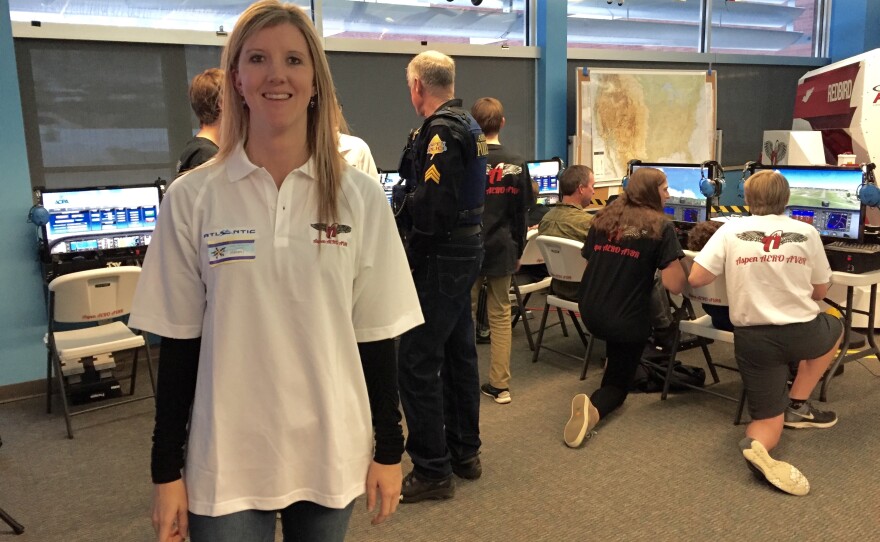Learning how to fly can take a long time. Hours of practice and coursework are required, and now students at the Aspen School District can take those courses for credit. Aspen Public Radio’s Elise Thatcher went inside the classroom last week and has this story.
Greg Roark is a man with energy, and he’s especially passionate about teaching kids how to fly. On a recent Thursday night, Roark hosted an open house for the aviation program he’s built from scratch with the Aspen School District. It’s called the Aspen Aerospace Alliance, one of the key pieces is a high-tech flight simulator, down in the basement of Aspen Middle School. It’s about twice the size of one of those race car arcade games, where you sit down in a bucket seat.
“You ready to fly? Here we go!” booms Roark as we sit down in the simulator. “Take your left hand... and lightly hold the stick, just like this,” he grasps a control stick in front of my pilot’s seat. Roark is sitting shotgun, and explains, “now I’m going to disengage the autopilot, and when I do you’ll notice that it may tend to pitch.”
We’re cruising from Aspen to Farmington, New Mexico. Screens wrap almost all the way around this cockpit and the resolution is so clear it feels like we’re truly looking out on the mountains and valleys below. This setup is nearly identical to the real plane, a Diamond DA40, that students here can fly once they’ve earned the right certifications.
This program has officially been in place for two years, but Roark has been building support since 2011. There are fifty participants, mostly students in the Aspen School District, but also some adults and and a teenager from Glenwood Springs.
While I’m gripping the control stick, students are gathered nearby… catching up and telling aviation math jokes. Juliette Woodrow is a junior at Aspen High School, and has been in the aviation program since her freshman year. “My name’s Grace Ferguson,” smiles Woodrow’s friend, “and I’m a sophomore, and I’ve been involved since second semester my freshman year.”
Woodrow and Ferguson have had to work hard in this program. They’re going through the coursework required to learn how to fly and get FAA-certified. “I started flying in the plane in September,” says Woodrow, “and I flew alone a couple weeks ago for the first time in the plane. And I was supposed to fly alone today, it’s more than 50 nautical miles, it’s cross-country.” “I did my solo in December,” says Ferguson quietly, “so I’ve been flying, I want to say since the beginning of this fall. And I’m also preparing for my cross-country solo which I will be doing really soon.”
Ferguson and Woodrow are getting credit for the demanding coursework that’s federally required to learn how to fly. Students taking courses pay as much as $300 a semester to participate. If they decide to start flying in an actual plane, with a flight instructor like Roark, they pay discounted rates.
Those fees are not intended to cover the cost of the program, which is expensive to run. Roark estimates it costs a little under $300,000 each year, and more than a $500,000 in donations so far for equipment. As Roark expands and adds other elements to the program, it’s ballparked to cost a little under $500,000 every year. Most of it is paid for by private donations, no funding comes from the school district.
Back in the simulator, Roark points to a purple barf bag attached to the wall. Banking a sharp turn in this little box feels eerily like being in a real plane. “[The bag] is not for show, it’s happened twice….both times they were adult students, by the way!” Roark chuckles.
Now that the program has been fully up and running for a few years, Roark is getting more interest in the community and beyond. Since every class is streamed online, he’s hoping to sign up other school districts, or adult students, to help offset the cost.







